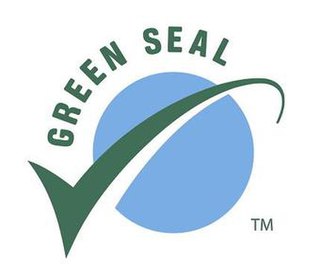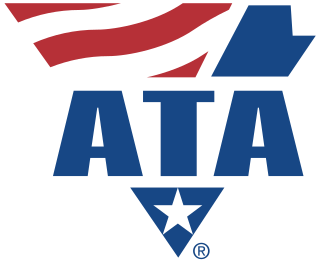Human resources (HR) is the set of people who make up the workforce of an organization, business sector, industry, or economy. A narrower concept is human capital, the knowledge and skills which the individuals command. Similar terms include manpower, labor, labor-power, or personnel.

Facilities engineering evolved from "plant engineering" in the early 1990s as U.S. workplaces became more specialized. Practitioners preferred this term because it more accurately reflected the multidisciplinary demands for specialized conditions in a wider variety of indoor environments, not merely manufacturing plants.

A fixed-base operator (FBO) is an organization granted the right by an airport to operate at the airport and provide aeronautical services such as fueling, hangaring, tie-down and parking, aircraft rental, aircraft maintenance, flight instruction, and similar services. In common practice, an FBO is the primary provider of support services to general aviation operators at a public-use airport and is on land leased from the airport, or, in rare cases, adjacent property as a "through the fence operation". In many smaller airports serving general aviation in remote or modest communities, the town itself may provide fuel services and operate a basic FBO facility. Most FBOs doing business at airports of high to moderate traffic volume are non-governmental organizations, either privately or publicly held companies.
Computer-aided facility management (CAFM) is the support of facility management by information technology. The supply of information about the facilities is the center of attention. The tools of the CAFM are called CAFM software, CAFM applications or CAFM systems. CAFM is often interchangeably with CMMS since both categories of software practically fulfill the same purposes.
Environment, health and safety is an interdisciplinary field focused on the study and implementation of practical aspects environmental protection and safeguard of people's health and safety, especially at company level and in an occupational context. It is what organizations must do to make sure that their activities do not cause harm. Commonly, quality - quality assurance and quality control - is adjoined to form a company division referred to as HSQE or equivalent initialisms.
Asset management is a systematic approach to the governance and realization of all value for which a group or entity is responsible. It may apply both to tangible assets and to intangible assets. Asset management is a systematic process of developing, operating, maintaining, upgrading, and disposing of assets in the most cost-effective manner.
Governance, risk management and compliance (GRC) is the term covering an organization's approach across these three practices: governance, risk management, and compliance.

The International Facility Management Association (IFMA), originally the National Facility Management Association (NFMA), is a professional membership association for facility management professionals. IFMA's global headquarters office is located in Houston, Texas, USA. IFMA also employs staff located in Antwerp, Belgium; and Shanghai, China.
A hotel manager, hotelier, or lodging manager is a person who manages the operation of a hotel, motel, resort, or other lodging-related establishment. Management of a hotel operation includes, but is not limited to management of hotel staff, business management, upkeep and sanitary standards of hotel facilities, guest satisfaction and customer service, marketing management, sales management, revenue management, financial accounting, purchasing, and other functions. The title "hotel manager" or "hotelier" often refers to the hotel's general manager who serves as a hotel's head executive, though their duties and responsibilities vary depending on the hotel's size, purpose, and expectations from ownership. The hotel's general manager is often supported by subordinate department managers that are responsible for individual departments and key functions of the hotel operations.
Medical equipment management is a term for the professionals who manage operations, analyze and improve utilization and safety, and support servicing healthcare technology. These healthcare technology managers are, much like other healthcare professionals referred to by various specialty or organizational hierarchy names.

Green Seal is a non-profit environmental standard development and certification organization. Its flagship program is the certification of products and services. Certification is based on Green Seal standards, which contain performance, health, and sustainability criteria.

The American Trucking Associations (ATA), founded in 1933, is the largest national trade association for the trucking industry. ATA represents more than 37,000 members covering every type of motor carrier in the United States through a federation of other trucking groups, industry-related conferences, and its 50 affiliated state trucking associations. Former Governor of Kansas Bill Graves was replaced by Chris Spear as the ATA's president and CEO in July 2016.
Building management is a discipline that comes under the umbrella of facility management. Hard services usually relate to physical, structural services such as fire alarm systems, lifts, and so on whereas soft services allude to cleaning, landscaping, security, and suchlike human-sourced services.

Office space planning is the process of organizing the workplace layout, furniture and office functions to work effectively together, while using space efficiently. Floor plans should consider the workgroup function, building codes and regulations, lighting, teaming requirements, inter-communication and storage, as well as zoning for employee workstations, task space needs, support rooms and reception areas to make the best use of available space. Optimising office spaces with effective space planning can aid circulation, productivity and improve workplace wellness, as well as the health and safety of occupants.
The Institute of Workplace and Facilities Management is a United Kingdom-based professional association for the facilities management sector.

Occupational safety and health (OSH) or occupational health and safety (OHS) is a multidisciplinary field concerned with the safety, health, and welfare of people at work. OSH is related to the fields of occupational medicine and occupational hygiene and aligns with workplace health promotion initiatives. OSH also protects all the general public who may be affected by the occupational environment.
The SA8000 Standard is an auditable certification standard that encourages organizations to develop, maintain, and apply socially acceptable practices in the workplace. It was developed in 1989 by Social Accountability International, formerly the Council on Economic Priorities, by an advisory board consisting of trade unions, NGOs, civil society organizations and companies. The SA8000's criteria were developed from various industry and corporate codes to create a common standard for social welfare compliance. The current (2014) version of the standard is built on earlier 2001, 2004 and 2008 versions.
The Annex SL is a section of the ISO/IEC Directives part 1 that prescribes how ISO Management System Standard (MSS) standards should be written. The aim of Annex SL is to enhance the consistency and alignment of MSS by providing a unifying and agreed-upon high level structure, identical core text and common terms and core definitions. The aim being that all ISO Type A MSS are aligned and the compatibility of these standards is enhanced.
The Global Facility Management Association is a federation of facilities management associations. It shares knowledge and understanding of facility management.
Data center management is the collection of tasks performed by those responsible for managing ongoing operation of a data center. This includes Business service management and planning for the future.






